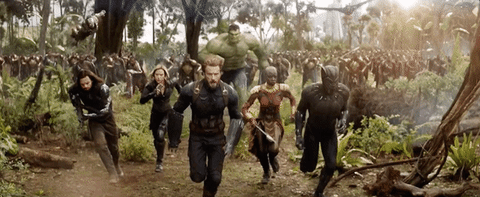
The artists will usually create anywhere from five to ten versions of a character before getting approval on even the FIRST design.
Marvel films! You love them, I love them, we all love them, right? And while I’m sure you all have your personal favorites (*ahem* Killmonger), you’re probably curious about what it takes to get these iconic characters from the comic book page to the silver screen.

Marvel Studios
So, BuzzFeed sat down with Marvel Studios’ Visual Development team to learn a little more about our favorite characters.
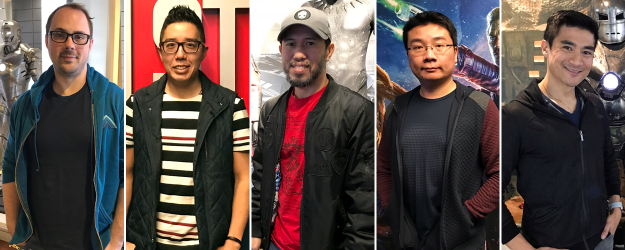
From left to right: Ryan Meinerding (Head of Visual Development), Andy Park (Visual Development Supervisor), Anthony Francisco (Senior Visual Development Illustrator), Jackson Sze (Senior Visual Development Illustrator), and Rodney Fuentebella (Senior Visual Development Illustrator).
BuzzFeed
Marvel’s Visual Development team is responsible for all the main heroes and villains in the films — and that can include costumes, suit/armor design, and character designs.
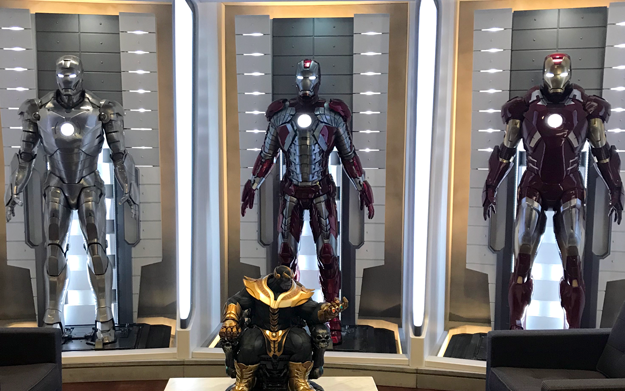
Meinerding, who’s been at Marvel since the first Iron Man film, explained, “Working on superhero movies, you’d think it might be the same thing over and over again, but each character brings its own unique challenges and its own set of history and iconography. And finding ways of translating that from the comics into the story world they’re creating for the film is always a unique challenge.”
BuzzFeed
The team actually gets scans of the actors to know what proportions they’re working with when designing the costumes.
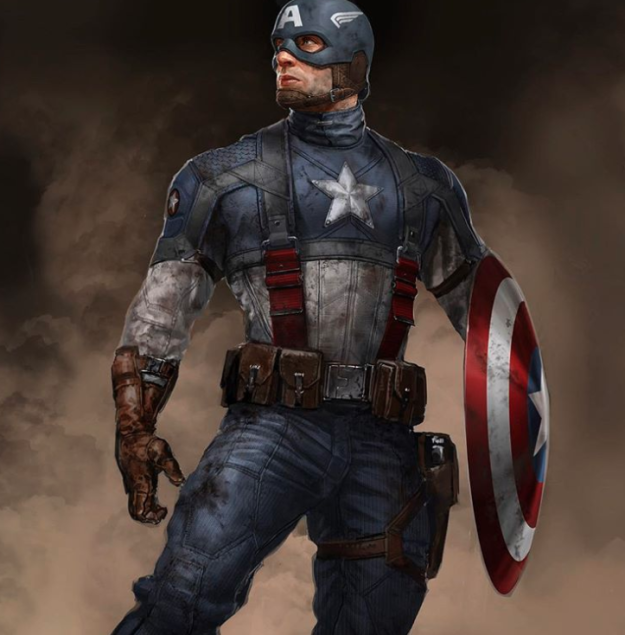
“We’re not just like throwing this impossible thing out there and saying, ‘Make this work!’ Marvel Studios has a way of focusing on the iconic image and then finding a way of making it happen,” said Meinerding.
Ryan Meinerding / Via instagram.com
And they also have a very unique way of working with costume designers on the films.
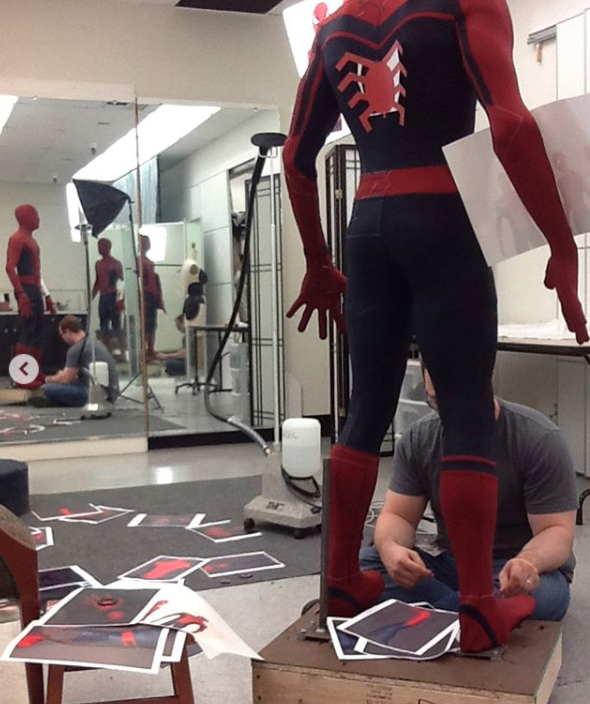
Meinerding explained, “We definitely collaborate and talk with the costume designers to figure out if there’s something we’re doing that’s pushing things too far, that they think can’t be done practically. And what we each bring to the table allows us to reach a result that couldn’t have been accomplished by either one of us alone.”
Ryan Meinerding / Via instagram.com
There will usually be a lot of adjustments with the costumes along the way, too.
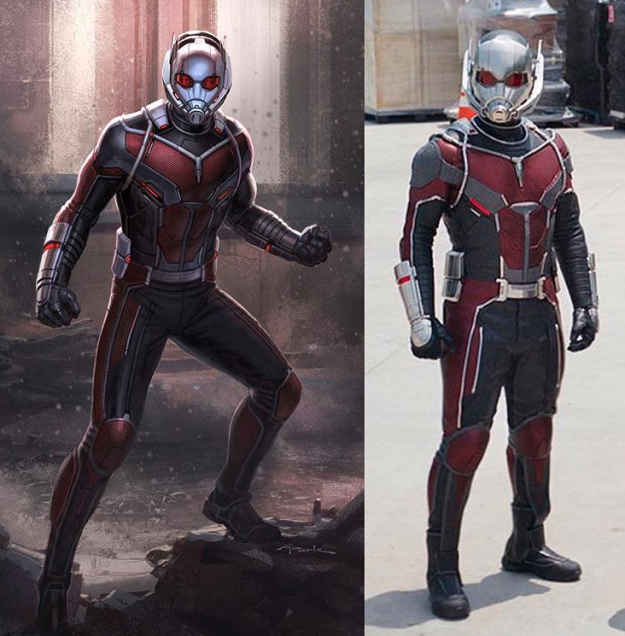
Park explained that there will be multiple fittings with the actor, where they make notes and find “problem” areas to make adjustments.
Andy Park / Marvel Studios / Via instagram.com
A lot of times, when the team starts designing costumes/character looks, there are no actors even cast yet.
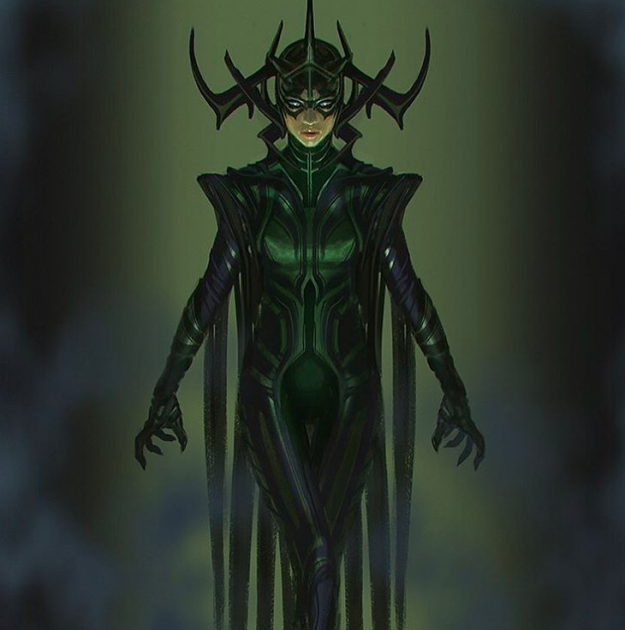
Park explained that with Hela, for example, there wasn’t even a story or script yet when the team started designing her.
Andy Park / Via instagram.com
The superhero costumes definitely evolve – for example, Black Panther’s suit in Captain America: Civil War had a more “layered” look vs the Black Panther suit which had more of a “singular skin” look.
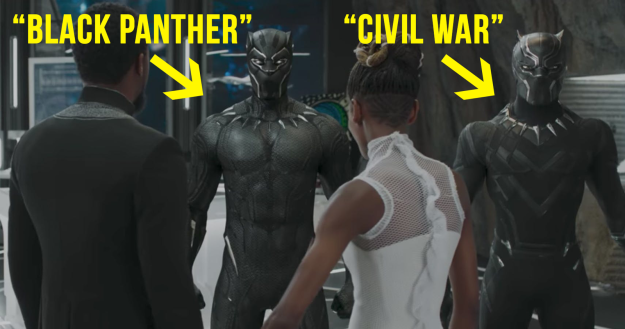
Meinerding explained, “The suit in Civil War had a lot layering and fine details — it was meant to look more like it was constructed in a way that ‘western eyes’ wouldn’t understand. Ryan Coogler (who directed Black Panther), however, wanted more of a ‘nanotech’ suit with a singular skin look.” (Meinerding designed the suit for Civil War, while artist Adi Granov designed the Black Panther suit.)
Marvel Studios
And you can see the iconic Black Panther mask changed from Civil War to Black Panther, too.
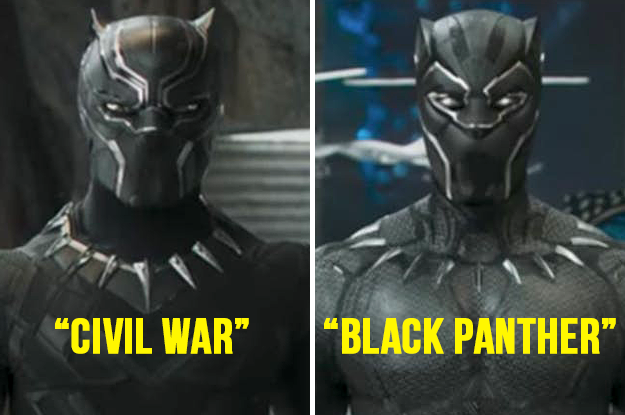
Coogler really wanted the new suit to have more of an actual cat “feel” with a high-tech stylized face according to Meinerding.
Marvel Studios
The first designers for Marvel Studios were Adi Granov, Phil Saunders, and Ryan Meinerding.
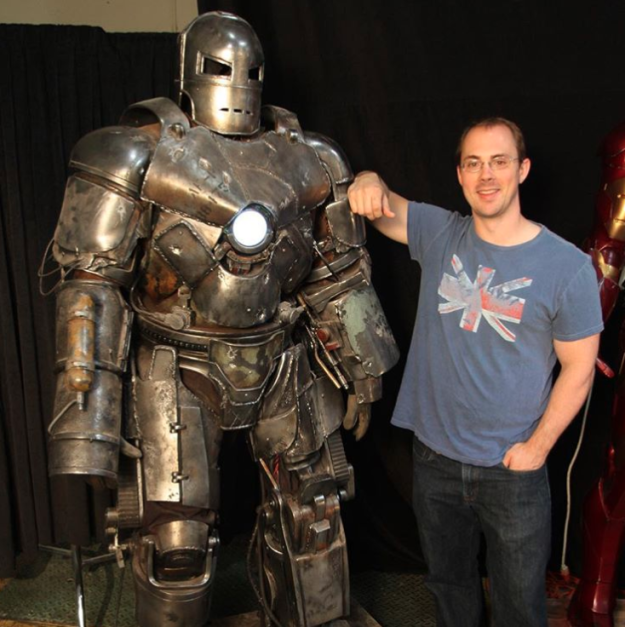
“After Iron Man, Marvel asked me to come back and do long-lead stuff on Captain America, Thor, and then that transitioned into Iron Man 2. And when Avengers came around, that’s when the team started,” said Meinerding.
Ryan Meinerding / Via instagram.com
And everyone on the Visual Development team is a “comic book geek.”
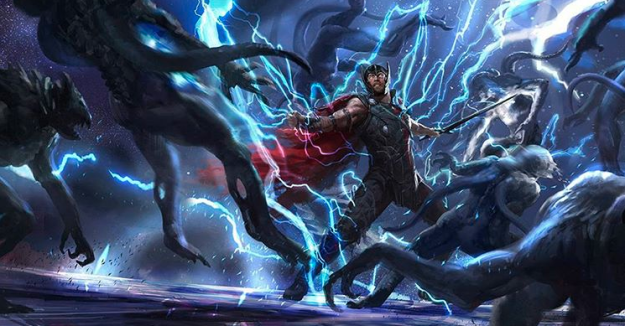
Francisco explained, “We’ve drawn these characters multiple times, in our own minds. So, it’s really coming from the heart when we design stuff.”
Anthony Francisco / Via instagram.com
There are often “code names” for the Marvel films.
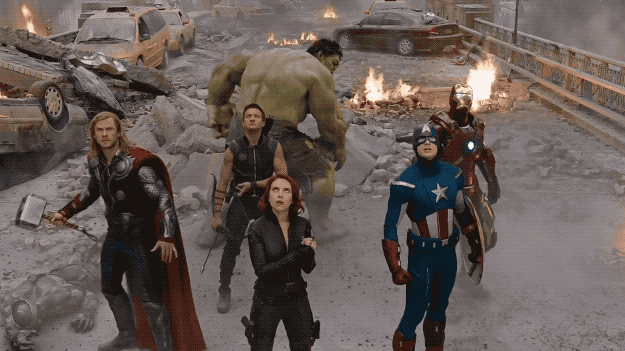
For example, The Avengers was called “Group Hug”.
Marvel Studios
There are so many Marvel films going on at anytime that Meinerding and Park split responsibilities when it comes to leading films.
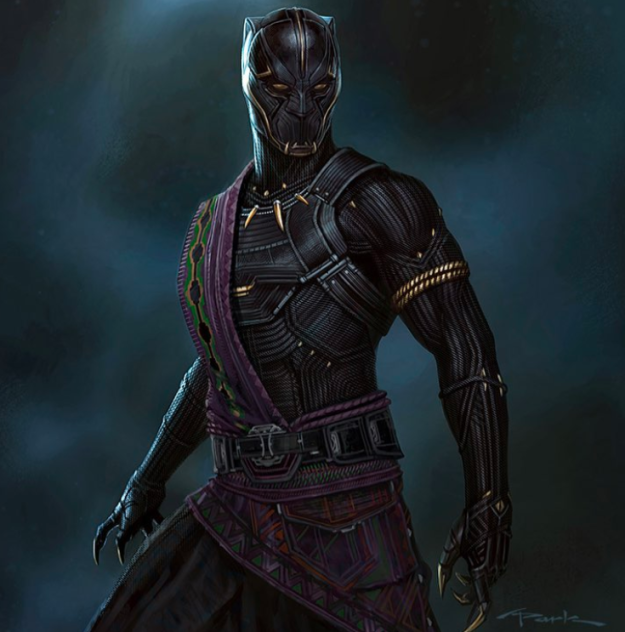
Although, because there is so much overlap in the films, they’ll often work on each other’s project. For example, Meinerding was the lead on Black Panther, but Park provided designs for T’Chaka.
Andy Park / Via instagram.com
As a project lead, sometimes things get so busy that Park said he will have his hands on as many as five films in a day.
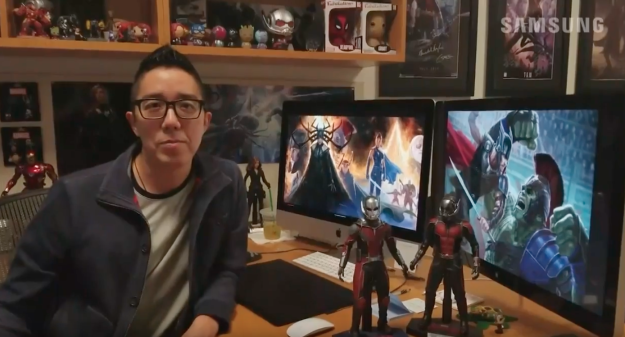
Whether he’s creating artwork for one film or going to a meeting for another, it can get pretty busy!
Andy Park / Samsung / Via youtube.com
Meanwhile, all of the artists will be creating designs for one or two projects at any given time, too.
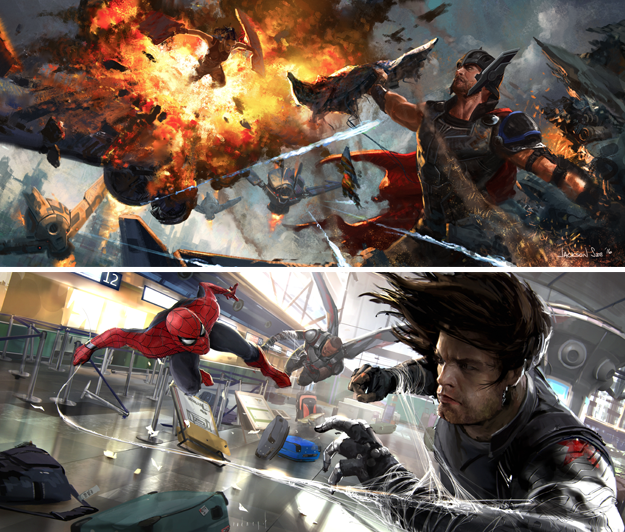
Sze explained, “We are either working on character designs or key frame illustrations to offer the film’s director and executives options.”
Courtesy of Jackson Sze (Top), Rodney Fuentebella (Bottom) / Marvel Studios
Although there’s only a handful of artists in Marvel’s Visual Development team, there are always many other freelance artists who work on the projects, too.
The artwork above was done by Karla Ortiz for Black Panther.
instagram.com / Via instagram.com
When each team member came to Marvel they had specialized skill sets as artists, but over the years they’ve learned to do other things.
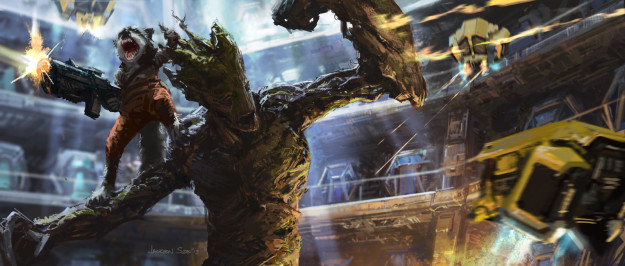
Sze said, for example, “Our skillsets evolved. I used to not do character design, but, being here, I have to do character design. They were kind and patient enough to work with me as I learned how to do that at a level that they need. And now we all just do anything.”
Courtesy of Jackson Sze / Marvel Studios
The artists often times find inspiration from real life, too, not just the comics.
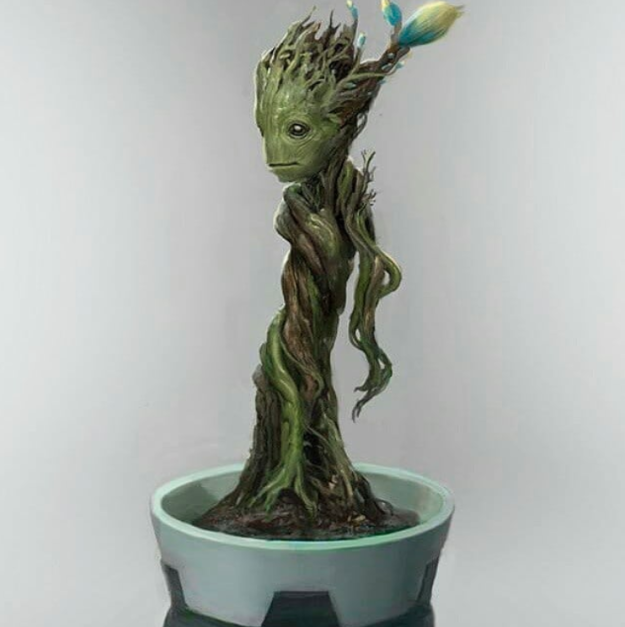
Anthony Francisco, who was responsible for the iconic Dora Milaje designs in Black Panther, also designed Baby Groot, and he was largely inspired by his own son during the process.
Anthony Francisco / Via instagram.com
But it’s not just about character design, either. Sometimes it’s about capturing a ~mood~ for a scene.
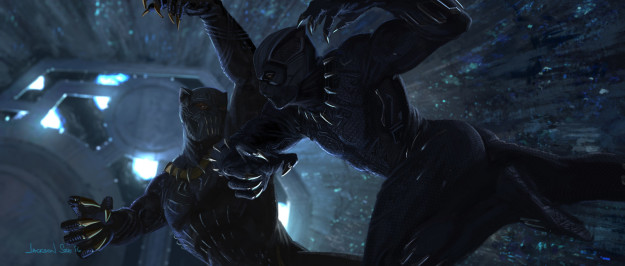
Sze made a lot of the key frame illustrations Black Panther — like the Killmonger and T’Challa fight falling into the vibranium mine. He explained, “A key frame illustration is a piece of art or illustration that encapsulates a scene to capture the spirit of the moment.”
Courtesy of Jackson Sze / Marvel Studios
Occasionally, artists come up with ideas during the development phase that weren’t even in the script and the director will love it so much, they add it to the film.
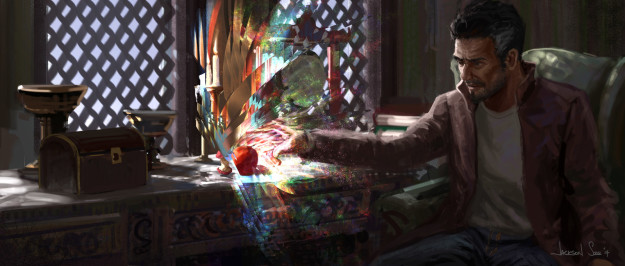
Courtesy of Jackson Sze / Marvel Studios
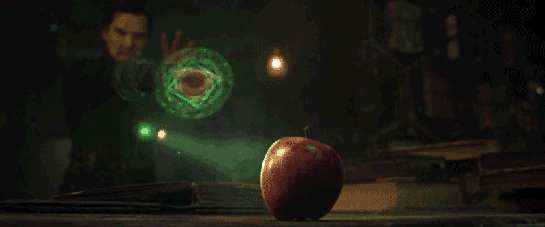
For example, Sze came up with the idea for the cool apple scene in Dr. Strange and the director, Scott Derrickson, liked the visual so much, he added it into the movie. Sze explained, “The task was to show ‘everyday magic’ and how do we relate that to the viewer? So, I thought of Dr. Strange eating an apple — just by showing different stages of the apple being eaten to show the audience that he’s manipulating time.”
Marvel Studios
You may think some character details are just “cool” looking, but they usually have a deeper meaning.
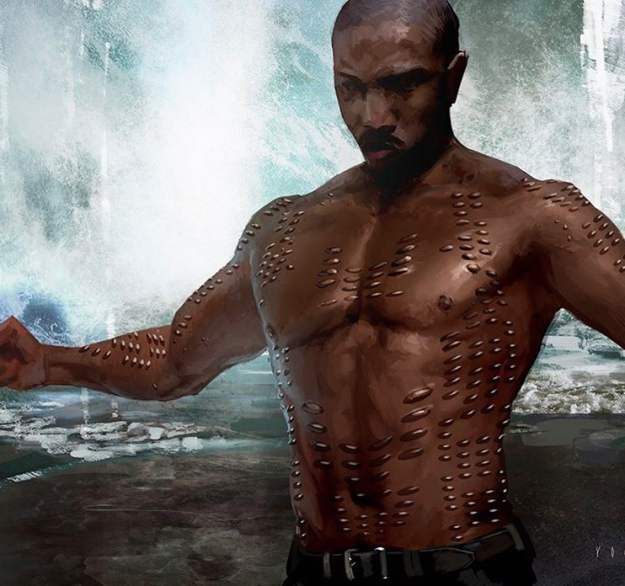
Fuentebella explained that with Killmonger in Black Panther, “The scars were a good visual metaphor for what he’s been through and how he went through his journey.”
Rodney Fuentebella / Via instagram.com
Rodney Fuentebella / Via instagram.com
Courtesy of Rodney Fuentebella / Marvel Studios
And finally, they want fans to know that they’re never trying to change iconic characters’ looks.
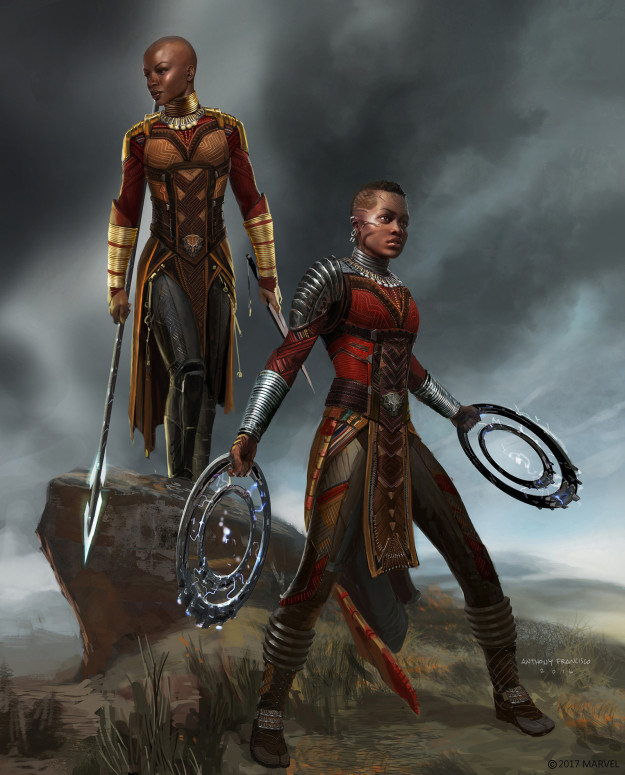
Francisco said, “We don’t try to change the look at all, we try to keep it as close to the comic book as possible, while putting our own design flair into it.”
Courtesy of Anthony Francisco / Marvel Studios

